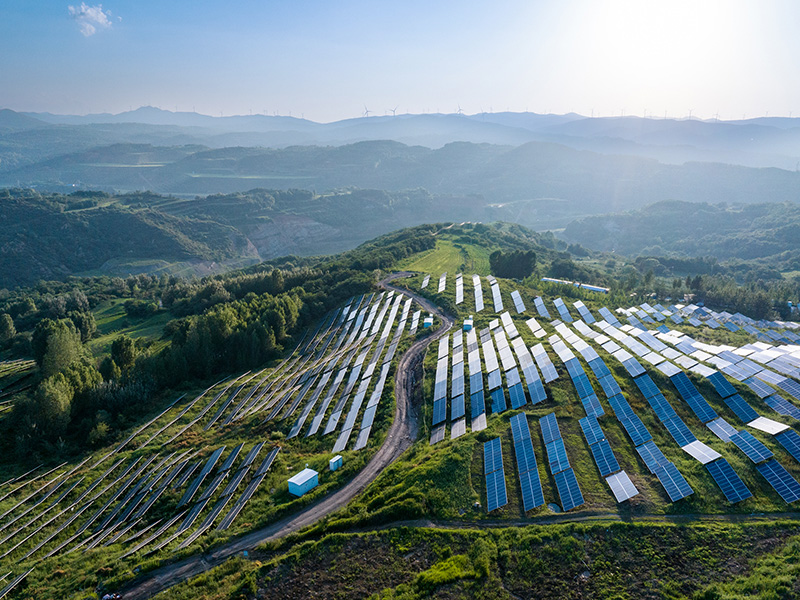
Authors
-
Ouida Chichester
Former Director, Energy, Extractives, Transport, and Industrials, BSR
Key Points
- Now more than ever, companies will have to implement best practices as we undergo a massive transformation to avoid the catastrophic impacts of climate change.
- Adhering to existing best practices is a good place to start on just transition, but it will not be enough to keep pace with evolving expectations.
- Existing best practice standards lack focus on equity, inclusion, justice, and benefits sharing, which are key elements to achieving a truly just transition.
COP27, described as the “African COP,” has concluded with a rallying call for community-based renewable projects that work for the people. Companies have a critical role to play in advancing this transition to a low-carbon economy—but will not succeed alone. As part of the Energy for a Just Transition collaboration in partnership with The B Team, BSR has been engaging with energy, utility, and related companies on this topic. Together as a cross-sector collaborative initiative, we understand “just transition” as the fair evolution from a fossil-based economy to a low-carbon or decarbonized world, and we recognize that it is both an outcome and a process that must be based on social dialogue, stakeholder engagement, and respect for human rights.
In our conversations, an important topic for consideration is the difference between just transition and consistently applied best practices.
Key areas of focus include best practices in a company’s own operations and in its supply chain as well as how companies show up in communities and society to achieve a just transition. Many of the practices can be mapped back to existing frameworks, like the UN Guiding Principles on Business and Human Rights, the OECD Guidelines for Responsible Business Conduct, the IFC Performance Standards, and the Sustainable Development Goals, among others. These standards, and others, can and should be used in the just transition.
However, what many of these existing standards lack is an explicit focus on equity, inclusion, justice, and benefits sharing—key elements for achieving a truly just transition.
There is no question that a just transition is different from business as usual. But the question remains: have the goalposts changed with just transition, or is it a rallying cry to (finally) do business not only better, but in the best way possible? Are norms changing and our understanding of what “counts” as best practice in the process of evolving?
While the roots of the just transition were born in the labor movement (meaning there is no just transition without workforce involvement, preferably an organized labor force with whom you can engage in social dialogue), it has grown to mean more than that by many stakeholders. With this expansion of scope, the expectations of what companies can do as part of the just transition have grown and will likely continue to evolve and deepen. This moment should be used as a catalyst for (finally) improving company practices.
The challenge that remains is that there are multiple definitions and understandings of just transition. While many different groups may use the term “just transition,” what that means translates into very different levels of ambition and transformation. The Just Transition Research Collaborative offers a framework for thinking about just transition (the Just Transition Initiative has a similar and equally helpful framework), which identifies four ideal-typical approaches to just transition that “form part of a continuum ranging from those approaches that preserve the existing political economy to those that envision significantly different futures.”
- Status Quo: Providing jobs becomes the proxy for justice, with companies compensating and/or providing new job opportunities for workers with a focus on the replacement of “old” jobs with “new” jobs. This can take the form of corporate-run job retraining programs and pension schemes for affected workers, but it does not address why the transition is needed.
- Managerial Reform: Equity and justice are sought within the existing economic system without challenging the existing economic model. Rules and standards are changed, and new ones are focused on workers’ health and well-being, including access to employment, occupational safety and health, social protection, and social dialogue.
- Structural Reform: Decision-making is inclusive and equitable, including collective ownership and management of decarbonized energy systems with an equal distribution of benefits or compensation as the result of the agency of workers, communities, and other affected groups. Power and wealth are broadly distributed.
- Transformative: The existing economic and political system is overhauled to promote alternative development pathways moving away from continuous growth and to envision profoundly different human-environment relations. It is based on the principles of equality for all as well as local control and community-led processes.
Understanding the desired outcome from the just transition will dictate the approach needed to get there. There is a difference between a truly transformational just transition and consistently employing “best practice” as it is defined today. Even the most ambitious companies have not set their targets at transformative just transition, as defined by the Just Transition Research Collaborative, and realistically are not likely to fully do so on their own. However, many are aiming to go beyond the status quo, make managerial reforms, and even begin to enact structural reforms within their companies and their ways of doing business.
Today, we are far from where we need to be on climate and just transition, with a monumental amount of work to be done in a short amount of time to avoid catastrophe. A good place for companies to start is to begin to consistently apply best practices across all operations regardless of local context and think holistically about the interconnectedness of issues.
However, I don’t believe that will be enough. Companies will also need to begin to apply an equity, inclusion, and justice lens to their work—something that goes beyond current best practice. This is not an easy ask, especially recognizing that despite company commitments and clear expectations, business-as-usual is not best practice. Today more than ever, we need companies to consistently implement the best possible practices as we, a global society, engage in a massive economic transformation and transition away from a fossil fuel-based economy.
Contact us if you are interested in learning more about how BSR can support your company in advancing the just transition or about Energy for a Just Transition.
BSR’s latest sustainability insights and events straight to your inbox.
Topics
Let’s talk about how BSR can help you to transform your business and achieve your sustainability goals.







